#Kete Art
Text
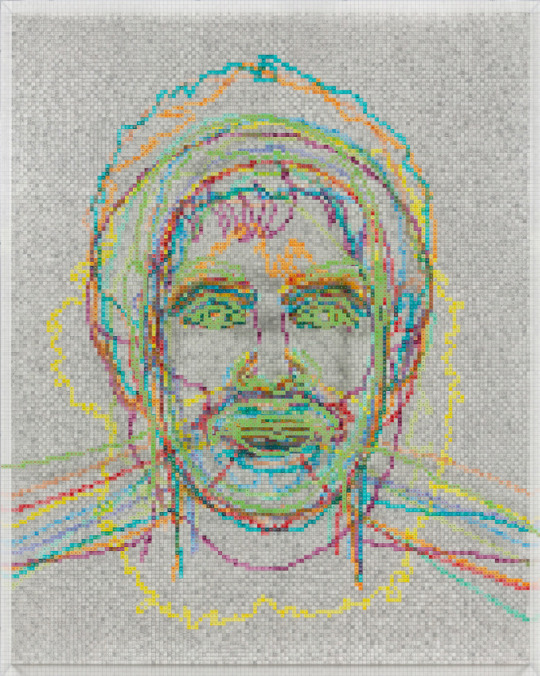
Charles Gaines, Faces 1: Identity Politics, #11, Molefi Kete Asante, (acrylic sheet, acrylic paint, lacquer, wood), 2018 [Paula Cooper Gallery, New York, NY. © Charles Gaines]
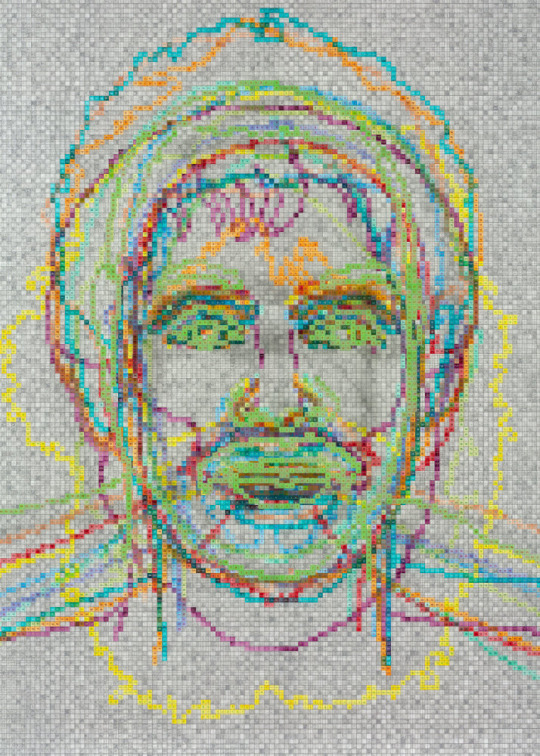
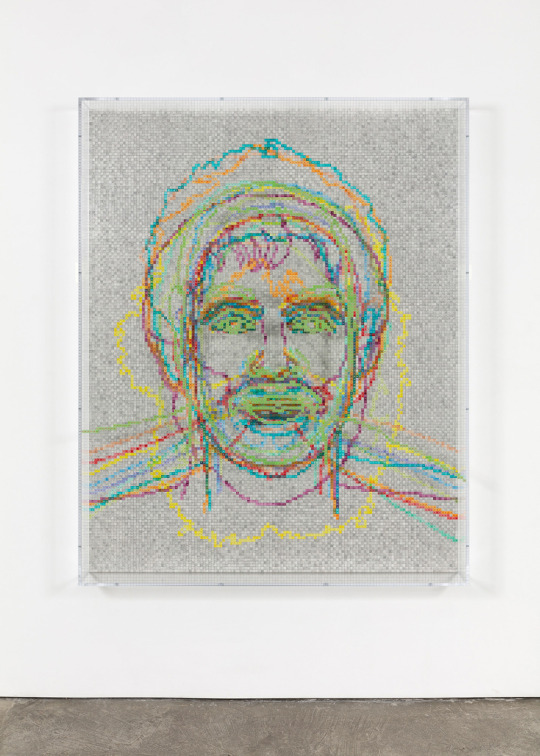
Exhibition: Charles Gaines, Paula Cooper Gallery, New York, NY, May 3 – June 23, 2018
#art#mixed media#visual writing#drawing#pattern#exhibition#charles gaines#molefi kete asante#paula cooper gallery#2010s
29 notes
·
View notes
Text
women artists that you should know about!!
-Judith Leyster (Dutch, 1609-1660)
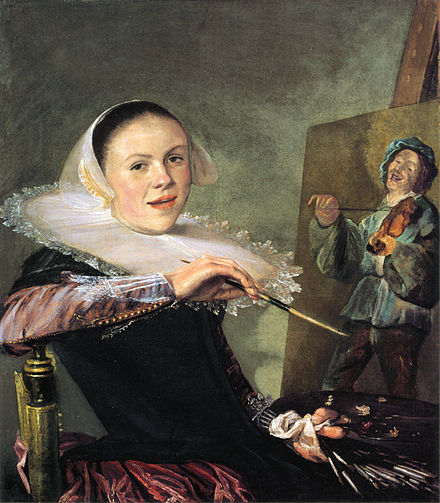
During her life her works were highly recognized, but she got forgotten after her death and rediscovered in the 19th century. In her paintings could be identified the acronym "JL", asually followed by a star, she was the first woman to be inserted in the Guild of St. Luke, the guild Haarlem's artists.
-Artemisia Gentileschi (Italian, 1593-1656)
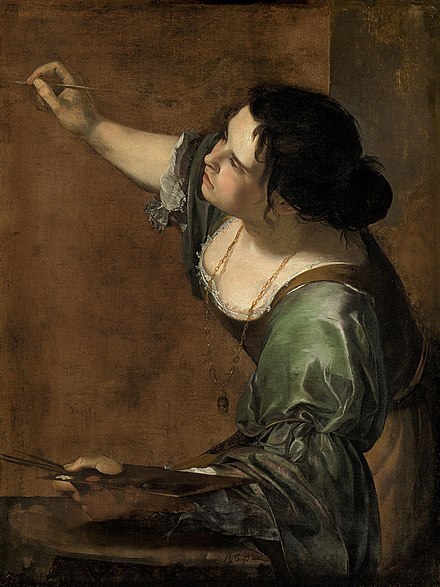
"... Si è talmente appraticata che posso osar de dire che hoggi non ci sia pare a lei, havendo fatto opere che forse i principali maestri di questa professione non arrivano al suo sapere". This is how the father Orazio talked about his nineteen year old daughter to the Medici's court in Florence.
In 1611, Artemisia got raped, and she had to Undergo a humiliating trial, just to marry so that she could "Restore one's reputation" , according to the morality of the time. Only after a few years Artemisia managed to regain her value, in Florence, in Rome, in Naples and even in England, her oldest surviving work is "Susanna and the elders".
-Elisabeth Louise Vigèe Le Brun (French, 1755-1842)
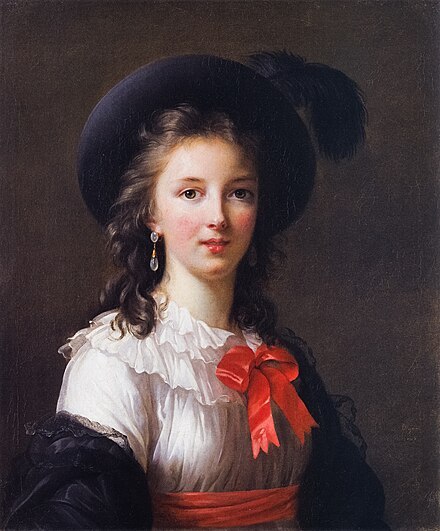
She was a potrait artists who created herself a name during the Ancien Règime, serving as the potrait painting of the Queen of France Marie Antoinette, she painted 600 portraits and 200 landscapes in the course of her life.
-Augusta Savage (Afro-American, 1892-1962)
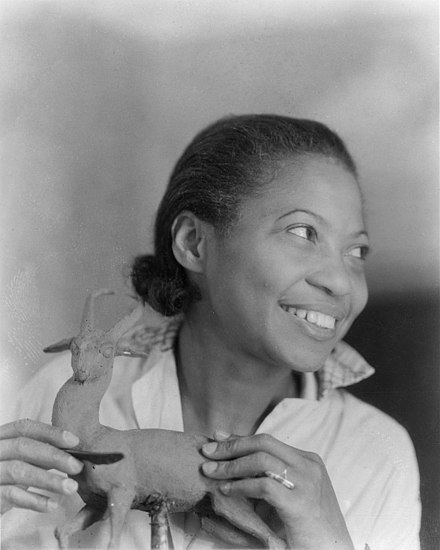
Augusta started making figures when she was a child, which most of them were small animals made out of red clay of her hometown, she kept model claying, and during 1919, at the Palm Beach County Fair, she won $25 prize and ribbon for most original exhibit. After completing her studies, Savage worked in Manhattan steam laundries to support her family along with herself. After a violent stalking made by Joe Gould that lasted for two decades, the stalker died in 1957 after getting lobotomized. In 2004, a public high school, Augusta Fells Savage Institute of Visual Arts, in Baltimore, opened.
-Marie Ellenrieder (German,1791-1863)
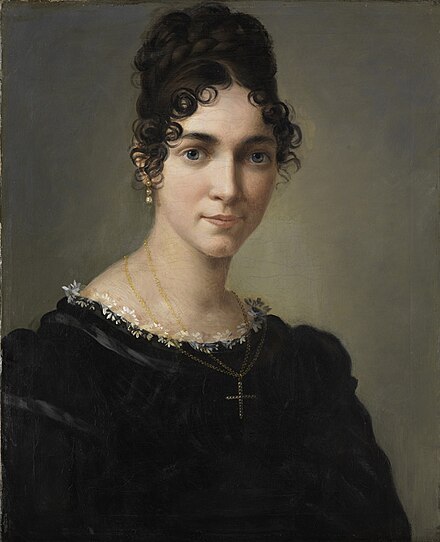
She was known for her portraits and religious paintings. During a two years long stay in Rome, she met some Nazarenes (group of early 19th century German romantic painters who wanted to revive spirituality in art),after becoming a student of Friedrich Overbeck and after being heavily influenced by a friend, she began painting religious image, getting heavily inspired by the Italian renaissance, more specifically by the artist Raphael. In 1829, she became a court painter to Grand Duchess Sophie of Baden.
-Berthe Marie Pauline Morisot (French,1841-1893)
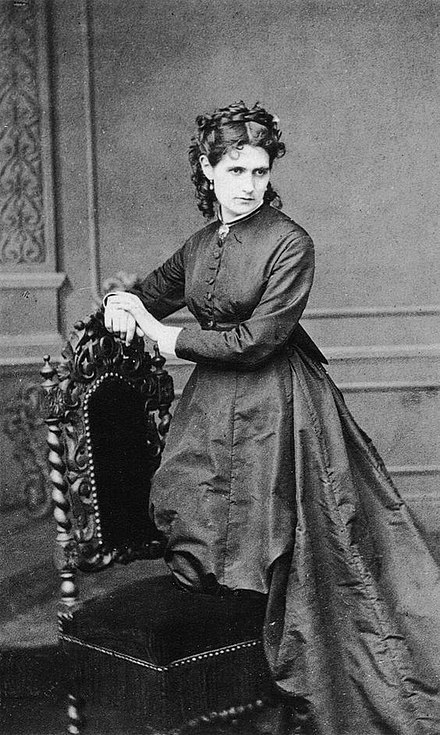
Morisot studied at the Louvre, where she met Edouard Manet, which became her friend and professor. During 1874 she participated at her first Impressionist exhibition, and in 1892 sets up her own solo exhibition.
-Edmonia Lewis or also called "wildfire" (mixed African-American and Native American 1844-1907)
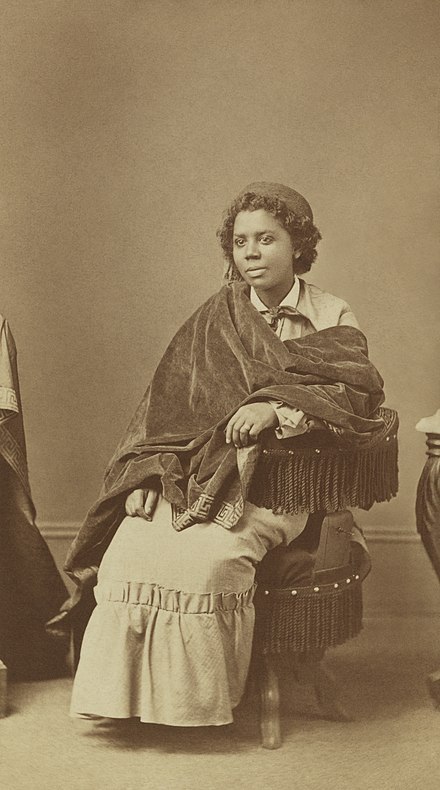
Edmonia was born in Upstate New York but she worked for most of her career in Rome, Italy. She was the first ever African American and Native American sculptor to achieve national and international fame, she began to gain prominence in the USA during the Civil Ware. She was the first black woman artist who has participated and has been recognized to any extent by the American artistic mainstream. She Also in on Molefi Kete Asante's list of 100 Greatest African Americans.
-Marie Gulliemine Benoist (French, 1768-1826)
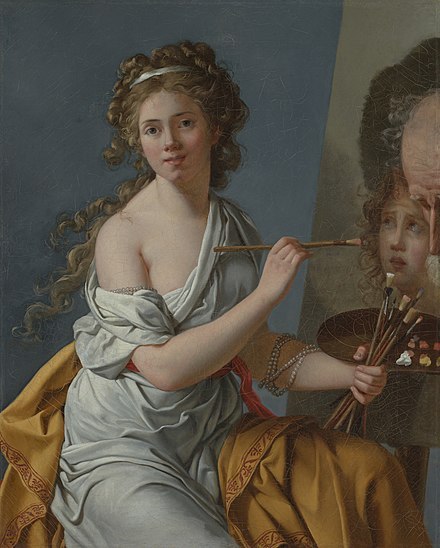
Daughter of a civil servant, Marie was A pupil of Jaques-Louis David, whose she shared the revolutionary ideas with, painting innovative works that have caused whose revolutionary ideals he shared, painting innovative works that caused discussion. She opened a school for young girl artists, but the marriage with the banker Benoist and the political career Of the husband had slowly had effect on her artistic career, forcing her to stop painting. Her most famous work is Potrait of Madeline, which six years before slavery was abolished, so that painting became a simbol for women's emancipation and black people's rights.
-Lavinia Fontana (Italian, 1552-1614)

She is remembered for being the first woman artist to paint an altarpiece and for painting the first female nude by a woman (Minerva in the act of dressing), commissioned by Scipione Borghese.
-Elisabetta Sirani. (Italian, 1698-1665)
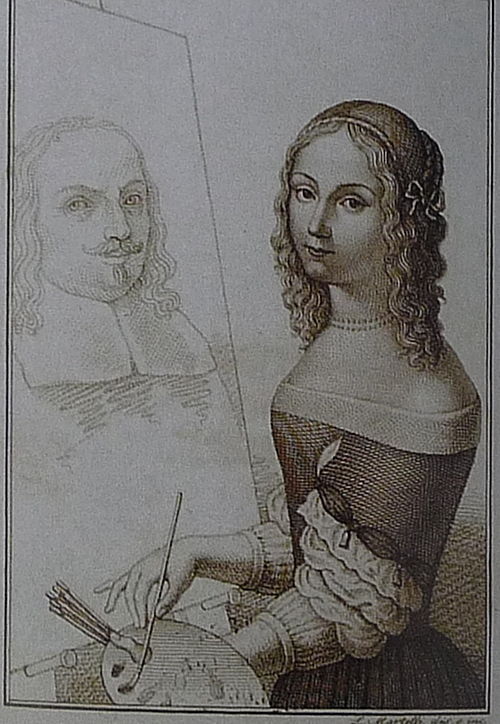
Her admirable artistic skills, that would vary from painting, drawing and engraving, permitted her, in 1660, to enter in the National Academy of S. Luca, making her work as s professor. After two years she replaced her father in his work of his Artistic workshop, turning it into an art schools for girls, becoming the first woman in Europe to have a girls' school of painting, like Artemisia Gentileschi, she represent female characters as strong and proud, mainly drawn from Greek and Roman stories. (ex. Timoclea Kills The Captain of Alexander the Great, 1659).
#judith leyster#artemisia gentileschi#Elisabeth Louise Vigèe Le Brun#Augusta Savage#Marie Ellenrieder#berthe morisot#Edmonia Lewis#Marie Gulliemine Benoist#Lavinia Fontana#Elisabetta Sirani#women artists#renaissance#baroque#art#women in art#artist women#feminism#women history#radical feminists do touch#radical feminists please interact#history#terfblr#terfsafe#cultura#culture
1K notes
·
View notes
Text

Julie Wolfthorn - Portrait of Kete Parsenow (ca. 1910)
Wolfthorn was an important member of the women's movement in Berlin and was involved in founding the Berlin Secession in 1898 and the Verein der Künstlerinnen und Kunstfreunde Berlin (Association of artists and art lovers in Berlin). From 1906, she was listed as a member of the Deutscher Künstlerbund (Association of German Artists). In the same year, she also founded the exhibition cooperation Verbindung Bildender Künstlerinnen (Society of Women Visual Artists) with Käthe Kollwitz. She is admired in particular for her portraits. The Image of the actor Kete Parsenow was created in about 1910.
During the Second World War, Wolfthorn continued to stay in Berlin but, because of her Jewish heritage and the associated repression by the National Socialist regime, could only exhibit at the Kulturbund Deutscher Juden (Cultural Federation of German Jews) – until its activities were declared illegal in 1941. On 28 October 1942, 78-year-old Julie Wolfthorn and her sister Luise Wolf were deported to the concentration camp in Theresienstadt, where Julie died two years later. Before she was deported, she had to declare her assets but she did not list any artworks. Her apartment was seized in May 1943 by the Vermögensverwertungsstelle (Asset Reclamation Office). But what happened to her works there? Had she managed to store her pictures in the cellar or give them to friends, or did they stay in the possession of the family? Were they confiscated or perhaps even destroyed? And where was the portrait of Kete Parsenow at that time?
Kete Parsenow, who was born in 1880 in Stettin and died in 1960 in Tübingen, worked as an actor, among others, under Max Reinhardt in Berlin. She moved in Berlin's artistic circles and knew Karl Kraus and Else Lasker-Schüler. After the war, she wrote to director Julius Bab, co-founder of the Jüdischer Kulturbund (Cultural Foundation of German Jews) that she had lost "everything I owned" during the National Socialist era. (source)
88 notes
·
View notes
Text
Eeee X3 intro or something

Im kete <3★
Im 17, 18 next may★
I love kmfdm, zero day, Andre kriegman, slipknot, green day, art, and the tcc ★
I'm 🇩🇪/🇲🇽!★
That's really it! :3

24 notes
·
View notes
Text

In Ancient Greek ketos (κῆτος, plural kete/ketea, κήτη/κήτεα), Latinized as cetus (pl. ceti or cete = cetea), is any huge sea monster. According to the mythology, Perseus slew a cetus to save Andromeda from being sacrificed to it. The term cetacean (for whale) derives from cetus. In Greek art, ceti were depicted as serpentine fish. The name of the mythological figure Ceto is derived from kētos. The name of the constellation Cetus also derives from this word.
A cetus was variously described as a sea monster or sea serpent. Other versions describe cetea as sea monsters with the head of a wild boar or greyhounds and the body of whales or dolphins with divided, fan-like tails. Cetea were said to be a colossal beast the size of a ship, their skulls alone measuring 40 feet (12 meters) in length, their spines being a cubit in thickness, and their skeletons taller at the shoulder than any elephant.
#Cetus#myth#greek mythology#mythical creatures#classical mythology#mythos#mythology#ancient greece#sea monster#legendary creature
2 notes
·
View notes
Text
Resume Sembilan Tahun Pertama

Sembilan Tahun Pertama / Ringkasan Home Education Volume 1 Pemikiran Charlotte Mason / Ellen Kristi - Penerbit CMid - 2022 - 120hlm
Pendahuluan
Charlotte Mason adalah seorang filsuf pendidikan Inggris kelahiran tahun 1800-an. Dia menulis buku berisi tawaran idealisme yang tinggi sekaligus panduan praktik yang lemah-lembut, a gentle art of learning. Ada 6 volume buku CM masing-masing tebalnya ratusan halaman ditulis dalam bahasa Inggris ala era Victoria, muatannya filosofis. Para praktisi CM di Amerika Utara menulis situs amblesideonline.org. Mereka menyediakan ringkasan dari setiap volume buku CM. Terinspirasi dari situs tersebut Mbak Ellen Kristi membuat buku ini agar kita mudah memahami value yang dibawa CM.
Bagian 1
- Pekerjaan paling penting di masyarakat ialah membesarkan anak-anak. Di tahun pertama kehidupan anak akan dipengaruhi oleh ibu, sehingga ibu harus berbekal pengetahuan. Ibu harus belajar serius tentang ilmu mendidik, ia perlu cinta yang berpikir, paham dasar fisiologi dan psikologi agar tahu cara membesarkan anak. Saat lahir anak terlihat tidak bisa apa-apa tapi semakin besar setiap ciri khas anak akan bermunculan. Pada tahun pertama prinsip masterly in activity tampak memadai untuk kegiatan anak. Meski orang tua tidak terlalu banyak ikut campur anak sibuk belajar, rasa penasaran mereka cukup besar. Kita cukup menyediakan makan yang bergizi, istirahat cukup, kasih-sayang, buku-buku, membiarkannya bermain bebas.
- Ada banyak pilihan cara untuk mendidik anak, zaman dulu orang-orang percaya mitos tetapi saat ini sudah banyak bukti sains yang mendasari pengasuhan. Ada yang memilih untuk mendidik dengan sangat disiplin sampai ke tahap kekerasan, ada juga yang sangat menghamba kepada anak. Tidak ada yang benar antara dua ekstrem itu, kita harus tahu visi pengasuhan anak kita sehingga bisa memilih prinsip mana yang sesuai.
- Kata CM anak tidak terlahir sebagai kertas kosong. Dalam agamanya, ada perintah : jangan melecehkan merendahkan atau merintangi salah satu dari anak-anak kecil ini. Contoh tindakan melecehkan anak dalam buku ini : melabeli anak nakal, membuat mereka melakukan sesuatu karena takut dengan hukuman, tidak konsisten mengajari aturan, membiarkan mereka tidur malam/ makan tidak sehat, menonton dan membaca yang tidak baik, pilih kasih. Contoh sikap merendahkan anak adalah Ibu tidak memberikan jam terbaik paling bugar untuk mengasuh anaknya, membiarkan mereka mengulang sikap buruk. Contoh perilaku merintangi anak adalah menganggap dia masih kecil dan tidak paham bab terkait relasi dengan Tuhan tapi jangan jadikan juga nama Tuhan untuk mengintimidasi anak.
- Setelah mengetahui yang tidak boleh dilakukan CM memberitahu apa yang sepatutnya dikerjakan. Pertama olahraga, Kedua istirahat - fokus kepada satu pekerjaan per satu periode waktu. Pagi hari setelah sarapan baik untuk pelajaran akademis. Setelah makan siang baik untuk kegiatan rekreatif di luar ruangan atau tugas prakarya. Malam sebaiknya tidak ada lagi pelajaran akademis. Cacah pekerjaan maksimal 20 menit per sesi sampai anak berusia 9 tahun dan sajikan variasi. Pendekatan ini bernama short lessons membantu anak agar tidak kelelahan, yang menjadi ciri khas metode CM. Ketiga nutrisi yang baik dan cukup, udara yang segar dan berlimpah minimal 1 jam sehari menghirup udara luar, sirkulasi udara yang bagus dan sinar matahari.
- Memahami hukum pendidikan, cinta, akal sehat dan doa tidak cukup. Perlu ilmu untuk menumbuhkan karakter anak.
Bagian 2
- Never be within doors when you can rightly be without, melatih kepekaan anak untuk mengamati.
- Meminta mereka bercerita tentang yang dilihat, melatih kecermatan dalam mengamati.
- Melukis secara lisan, lihat lalu pejamkan mata dan cerita.
- Mengakrabi bunga dan pohon : mengamati ciri, membuat kalender alam, ngumpulin dan gambar tanaman.
- Menelateni binatang : mencatat makhluk yang dilihat, bentuk warna lokasi apa yg sedang.
"Alam sumber hiburan yang tak ada habisnya, meningkatkan rentang perhatian, menempa ketelitian dan ketekunan, berpusat pada alam (mengalihkan ego)"
- Membaca alam dan buku tentangnya : ciri tanaman dan hewan.
- Belajar lewat indra. Tanpa disuruh, bayi akan meraba/ mengemut dll apalagi di alam. Tidak berkata apa-apa bukan brati tidak belajar apaapa.
- Mengakrabkan anak dengan alam. Alam selalu baru, berubah dan tersirat.
- Geografi luar ruangan : menjelaskan kontur bumi yang bermacam, melihat bentuk awan, posisi matahari, konsep jarak
- Mengingatkan anak bahwa semua ini ada penciptanya.
- Permainan luar ruangan yg diciptakan anak sendiri : lari loncat naiknaik.
- Sesekali di cuaca buruk dengan syarat.
- Keterampilan mencari jejak.
- Udara dan sinar matahari akan membuat anak sehat dan bahagia.
Bagian 3
- Setelah mengenal dunia dengan menjelajah, selanjutnya adalah membangun kebiasaan baik dalam diri anak. "The formation of habits is education and education is formation of habits.
- Anak belum bisa mengendalikan kehendak, melawan impuls2 yang ada.
- Anak membawa potensi fisik dan genetik dari orangtua, memiliki hasrat alami sbg manusia, pengetahuan, kebanggaan diri, cinta dan persahabatan, punya kemampuan merasa.
- Kebiasaan bisa mengganti sifat bawaan lahir "habit is ten time nature". Sifat bawaan lahir yang buruk. Dengan keseharian kita, kita menanamkan kebiasaan pada anak, pilihannya : yang baik atau buruk?
- Memasang rel kebiasaan dengan menetapkan tujuan / visi pendidikan. Anak tidak bisa mengenali otomatis mana impuls baik atau buruk. "Man is a creature of habit". Ada bbrp prinsip dalam habit training agar tidak ada penyalahgunaan konsep diantaranya adalah menghormati anak sbg pribadi yg utuh.
- Fisiologi kebiasaan : otot dan otak akan lebih mudah melakukan hal yang terus menerus diulang berkaitan dengan simpuls otak atas pengulangan tsb. Tidak semua kebiasaan bisa ditanamkan saat dewasa. Anak bisa 10x lebih cepat mempelajari kebiasaan baru.
- Kebiasaan buruk tidak bisa hilang dgn bertambahnya umur atau dengan ancaman dan hadiah. Bisanya dengan diganti kebiasaan baru. Kita harus memenangkan kerjasama dengan anak, mulai dari penjelasan lembut, kesepakatan dan peringatan.
- Kebiasaan bisa ditanamkan sejak bayi, mereka akan merekam. Dan perlu dilatih dgn bbrp kegiatan fisik.
Bagian 4
- Sebagai guru baiknya mengenal siswa secara mendalam, jadi ortu adalah guru terbaik bagi anakanaknya. Tp mendidik tidak cukup dgn intuisi. Dalam habit training, perlu cara tepat. Ini akan mempermudah orangtua menjalani hari. Dari sekian banyak habit training, dilakukan secara bertahap.
- Habit of attention menjadi prioritas utama, fondasi untuk menguasai displin mental lain. "Pencapaian intelektual tertinggi bergantung kepada kebiasaan memperhatikan". Bisa dilatih sejak bayi dengan melafalkan apa yang sedang dikerjakan, pada umur sekolah memakai prinsip short dan varied lessons. Habit ini bertentangan dengan stimulasi audio visual berlebih. Beri apresiasi, bukan ranking. Sesuaikan target sesuai kemampuan, pelajari tenggat waktu, jangan biasakan berlambat-lambat.
- Kebiasaan terapan agar anak gesit dalam berpikir dan bertindak, melatih mereka lebih baik dari hari ke hari. Selalu antusias, tidak tergantung mood, tidak banyak mengeluh. Memberi mereka supply ide yang menarik dan menggugah, memuji saat bersungguh-sungguh mengerjakan sesuatu.
- Kebiasaan berpikir menumbuhkan pola pikir yang acak dan tak urut menjadi logis dan kritis pada anak. Kecepatan menalar harus kita latih sehari-hari, mereka perlu melacak/ menduga sebab dari akibat, membandingkan hal, melihat kesamaan dan perbedaan.
- Kebiasaan berimajinasi yang dilatih dengan buku berisi kisah khayalan/ adegan di zaman yang berbeda/ petualangan aksi dll.
- Kebiasaan mengingat dapat diperoleh dengan : atensi penuh yang tidak bisa dipaksa dari luar harus dari niat anak itu sendiri; asosiasi - materi pelajaran harus berkaitan satu sama lain; memakainya terus-menerus.
- Kebiasaan mengerjakan dengan sempurna/ habit of perfect execution dilatih dengan mengingat target yang sesuai dengan kemampuan, mengajak anak untuk evaluasi kesalahan, merayakan momen pencapaian, menyelesaikan apa yang telah dimulai.
- Orang tua adalah perwujudan dari semua otoritas (hukum alam, hukum sosial, Tuhan) untuk menanamkan kebiasaan taat kita harus bisa menjadi contoh untuk anak. Inti dari latihan habit of obedience ini adalah mengasah kepekaan anak pada kebenaran dan memperkuat kehendaknya untuk memilih kebenaran itu. Kita harus menaati aturan secara konsisten (pengulangan tanpa henti) dan paham mengapa itu harus ditaati. Ketaatan melahirkan kebebasan.
- Melatih kejujuran dengan menyampaikan sesuai keadaan, peka pada ketidakbenaran.
Bagian 5
- Sebaiknya orang tua tidak menyerahkan sepenuhnya pendidikan anak kepada sekolah kita harus tahu apakah sekolah punya visi misi yang jelas dan sesuai dengan keluarga masing-masing? Orangtua juga harus tau : apa tujuan belajar; mana yang harus diprioritaskan untuk dipelajari; belajar seperti apa yang efektif. Seharusnya pelajaran itu menggugah rasa ingin tahu anak; melatih kekuatan daya pikir anak; meningkatkan pengetahuan anak; membekaskan kesan pada jiwa anak untuk dikenang terus dengan hati senang dalam jangka waktu panjang.
- Untuk anak usia dini kita harus memilih guru yang tepat. Di bawah usia 6 tahun tidak perlu diberi target pelajaran, cukup dibiasakan melakukan setiap tugas sebaik mungkin. Dalam keseharian di rumah ada banyak sekali kesempatan belajar bagi seorang anak.
- Anak terlihat bahagia, dominasi guru yang terlalu besar, sosialisasi : membuat kita terlalu cepat memasukkan anak ke sekolah. Hal ini bisa menjadi overstimulasi karena akan menimbulkan gesekan emosi pada anak. Akan lebih baik memaparkan mereka dengan orang-orang berbagai umur seperti berkumpul dengan keluarga besar & komunitas. Di bawah 6 tahun tidak perlu pelajaran formal terstruktur akan lebih baik membebaskan mereka bergembira menciptakan permainan sendiri tanpa jadwal saklek. "Menciptakan berbagai peluang belajar lalu menyingkir dan mundur berjaga-jaga kalau sewaktu-waktu anak butuh bantuan darurat"
- Mengajari membaca dengan memahamkan bahwa huruf itu melambangkan bunyi dan ada maknanya. Sering dibacakan, mengekspos mereka pada tulisan, memberi tahu nama huruf bunyi dan cara menyuarakan nya, mengajari mereka dengan permainan, dimulai dari kata-kata yang mereka pahami misal lirik lagu. Belajar membaca adalah lanjutan dari proses anak mengenal kata di sekitar. Ajari anak membaca terstruktur sejak 6tahun.
- Melatih anak untuk rutin deklamasi, bisa dari puisi pendek atau ayat suci. Kemudian ditambah latihan intonasi dan ekspresi agar makin memahami makna kata yang dibaca. Untuk anak 8-9tahun paparkan berbagai jenis buku untuk bisa dibaca anak. Buku yang menggugah ide. Gunakan prinsip short lessons, sekali baca lalu narasikan. Jangan brondong dengan pertanyaan, masuklah saat mereka bertanya dengan pertanyaan terbuka.
- Saat melakukan narasi anak akan mengerahkan kemampuan untuk mengingat, imajinasi, perbendaharaan konsep dan daya nalar. Sehingga bisa mengevaluasi seberapa jauh anak menyerap pelajaran. Dimulai saat 6 tahun tapi jangan lebih mudah daripada itu dengan menggunakan literatur klasik. Di umur itu mereka dibacakan buku klasik tapi tidak membaca sendiri cukup 10-15 menit per buku, sekali pembacaan.
- Belajar menulis diawali dengan menulis huruf yang mudah, ukurannya tidak besar/ tidak kecil alias sedang, bisa dimulai dengan alat yang mudah seperti spidol jangan langsung menggunakan pensil di kertas, biasa kan habits of perfect execution sebelum lanjut ke setiap hurufnya, 5-10menit.
- Belajar menulis diawali dengan menulis huruf yang mudah, ukurannya tidak besar/ tidak kecil alias sedang, bisa dimulai dengan alat yang mudah seperti spidol jangan langsung menggunakan pensil di kertas, biasa kan habits of perfect execution sebelum lanjut ke setiap hurufnya, 5-10menit.
- Menyalin : membuat anak belajar akan ejaan dan pemakaian tanda baca, anak dibiarkan memilih sendiri kalimatnya, batasi panjangnya sesuai kemampuan, menggunakan kertas bergaris ganda, durasinya 10-15 menit. Perhatikan postur tubuh dan cara tangan memegang alat tulis, juga cahayanya serta ketinggian meja dan kursi.
- Ejaan dan dikte : membuat anak untuk memvisualisasikan kata dan semakin hafal bagaimana kata-kata harus ditulis, dimulai dengan anak membaca terlebih dahulu kemudian seseorang membacakan frasa demi frasa, hanya diulang sekali, bacakan dengan ekspresi, tanyakan kata mana yang susah dipahami dan sulit ditulis anak.
- Anak sebaiknya tidak diminta mengarang sampai umurnya 10 tahun karena sebelum itu anak hanya akan mengoplos kata-kata. Biarkan saja mereka menyelami bahasa dan membaca buku-buku bermutu, membuat narasi dan menyalin juga diminta bercerita tentang kegiatan sehari-hari.
- Pelajaran kitab dimulai sejak anak berumur 6 tahun fokusnya untuk menggambarkan kasih sayang Tuhan kepada makhlukNya, biarkan mereka mencerna dan menyimpulkan sendiri bacaannya dan sudah bisa mulai menghafal. Gunakan ilustrasi untuk membantu pemahaman.
- Berhitung : meningkatkan kekuatan dan ketajaman daya nalar anak. Mulai dengan memperkenalkan konsep nyata matematika setelahnya baru melangkah ke simbol matematis. Bisa dibantu dengan alat peraga tapi perlahan untuk sementara. Selanjutnya masuk ke tambah dan kurang sampai angka 20. Berikan soal cerita untuk memahami pembagian dan perkalian sebagai bentuk mudah dari penambahan dan pengurangan. Selanjutnya anak belajar sistem bilangan puluhan dan nilai mata uang juga konsep ukuran dan berat.
- Mempelajari ilmu pengetahuan alam dimulai dengan membawa anak akrab dengan alam sejak kecil dan membiarkan mereka penasaran terhadapnya lalu mengajak mereka bereksperimen sederhana tentang alam.
- Mengenalkan anak pada konsep geografi dimulai dengan mengajak mereka berkegiatan di luar ruangan mengamati sungai, bukit, tanah lapang, kolam dan yang lainnya untuk membayangkan permukaan bumi di tempat lain dari cerita yang dia baca. Kemudian disambung dengan keterampilan membuat dan menggunakan peta, dimulai dari membuat peta rumah sekitar rumah, kota tempat ia tinggal, belajar menggunakan kompas, memahami kode dalam peta, mengamati bola dunia.
- Pendekatan umum ke khusus bukan pendekatan tepat untuk sejarah. Biarkan anak terlebih dahulu akrab dengan sosok historis tertentu menjalin relasi dengan hidupnya. Memahami periode sejarah saat toko hidup, siapa yang sezaman, bagaimana karakter masyarakatnya, seperti apa sistem sosialnya, hal apa saja yang terjadi di negeri lain selama periode itu --akan menjadi titik pijak anak untuk belajar babak lainnya.
- Tata bahasa tidak diminati anak sampai dia mungkin berumur 9 tahun yang penting anak itu bisa mengetahui logika berbahasa membedakan subjek dan kata kerja.
- Dalam mempelajari bahasa asing yang penting adalah telinga bukan mata yang pertama harus dilihat bagaimana dia bisa mengucapkan dengan benar, tidak perlu melihat ejaan tertulis dari kata asing tersebut, paling mudah belajar di usia muda dengan teknik imersi atau membuat anak bergaul dengan penutur asli, tapi jika tidak bisa bisa dikenakan lewat percakapan sehari-hari, dan diutamakan tahu kata kerja sebelum kata benda bahasa asing.
- Pelajaran seni dasarnya : menciptakan dan mengapresiasi yang paling utama adalah yang kedua. Sejak 6 tahun pelajaran seni bisa dilakukan dimulai dengan menceritakan ringkas tentang siapa seniman, memperlihatkan karya seni, mendorong anak untuk mengamati hal kecil dalam sebuah seni, melihat konteks lukisan, menanyakan anak tentang pesan yang disampaikan oleh lukisan, kemudian mereproduksi. Arahkan anak untuk terbiasa melukis dengan bentuk dan warna yang mereka inginkan. Ajari juga seni rupa dengan tanah liat atau play-doh, seni musik, seni olah tubuh, hasta karya juga.
Bagian 6
Anak harus punya : (1) kehendak kuat untuk dapat menyelesaikan apa yang akan dikerjakan, (2) nurani sebagai pembeda mana yang baik dan buruk, (3) relasi dengan Tuhan agar menyadari setiap aktivitasnya adalah bentuk kasih sayang Tuhan.
2 notes
·
View notes
Text

Mary Edmonia Lewis (July 4, 1844 – September 17, 1907) was a sculptor who worked for most of her career in Rome. Born free in New York, she was the first woman of African American and Native American heritage to achieve international fame and recognition as a sculptor in the fine arts world. Her work is known for incorporating themes relating to African American people and indigenous peoples of the Americas into Neoclassical-style sculpture.
She began to gain prominence in the US during the American Civil War; at the end of the 19th century, she remained the only African American woman who had participated in and been recognized to any degree by the American artistic mainstream. In 2002, the scholar Molefi Kete Asante named her on his list of 100 Greatest African Americans. #africanhistory365 #africanexcellence
0 notes
Text
The Kiwi Craze for Bags: A Glimpse into New Zealand's Bag Culture

Introduction
New Zealand, often referred to as the Land of the Long White Cloud, is known for its stunning landscapes, unique wildlife, and vibrant culture. However, one aspect of Kiwi life that often goes unnoticed is the nation's love affair with bags. From the iconic jute shopping bags to the traditional Māori kete, bags in New Zealand hold a special place in the hearts of its people. In this blog, we'll delve into the fascinating world of bags in NZ and explore their significance in this beautiful country.
Jute Shopping Bags: The Kiwi Icon
One of the most recognizable symbols of New Zealand's bag culture is the humble jute shopping bag. These eco-friendly bags have become synonymous with grocery shopping in the country. Supermarkets across NZ offer jute bags as a sustainable alternative to plastic bags, and many Kiwis can be seen carrying them while doing their weekly shopping.
The popularity of jute bags in New Zealand is a testament to the nation's commitment to environmental sustainability. These bags are not only durable and reusable but also biodegradable, making them an excellent choice for eco-conscious shoppers.
The Māori Kete: A Cultural Treasure
While jute bags may dominate the modern shopping scene, the traditional Māori kete holds immense cultural significance in New Zealand. The Māori people, the indigenous population of Aotearoa (New Zealand), have been creating and using kete for centuries.
Kete are woven baskets or bags made from flax leaves, and they come in various sizes and shapes. They are used for a wide range of purposes, including carrying food, tools, and personal belongings. Each kete is a work of art, often featuring intricate weaving patterns and designs that reflect the Māori culture and heritage.
These beautiful bags are more than just functional items; they are a symbol of Māori identity and craftsmanship. Many contemporary Māori artists continue to create kete, preserving this traditional art form and ensuring that it remains a vital part of New Zealand's cultural fabric.
Kiwi Fashion and Designer Bags
New Zealand has a burgeoning fashion industry, and Kiwi designers are making their mark on the global stage. Bags, as essential fashion accessories, play a significant role in this industry. Local designers create a wide range of bags, from stylish handbags to practical backpacks and everything in between.
Kiwi fashion is often influenced by the country's natural beauty, and you'll find many bags adorned with designs inspired by native flora and fauna. Additionally, New Zealand's commitment to sustainability is reflected in the materials used by these designers, with many opting for eco-friendly and locally sourced materials.
Outdoor Adventure Bags
New Zealand's breathtaking landscapes make it a haven for outdoor enthusiasts. Whether it's hiking in the Southern Alps, kayaking in the Marlborough Sounds, or cycling the Otago Rail Trail, Kiwis love their outdoor adventures. As a result, bags designed for outdoor activities are in high demand.
Specialized backpacks, dry bags, and hiking packs are popular among those who seek adventure in the great outdoors. These bags are designed to withstand the rugged terrain and unpredictable weather that New Zealand has to offer, making them essential companions for any outdoor excursion.
#italian leather handbags#leather bags in new zealand#leather handbag in new zealand#designer leather handbags#handbags#italian leather bags#leather bag
0 notes
Text
Poutama

Poutama is one of the patterns of the tukutuku panels. It has a step-like pattern which traditionally symbolised genealogies as well as the levels of learning.
Of significance, it was said that the staircase was the one that the god Tane too to heaven in order to collect the three baskets of knowledge that he then brought back for the Māori people.
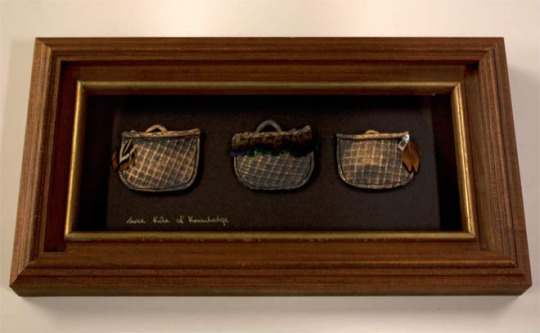
The 3 baskets of knowledge are as follows:
Te Kete Uruuru Tau Aronui - wisdom/ building/ arts/ agriculture
Te Kete Uruuru Matua Tuauri - ancient rites and ceremonies
Te Kete Uruuru Rangi Tuatea - The knowledge if incantations, war and magic. The tradition which includes the history of Māori
My Poutama | waipushrink | Blipfoto
Baskets of knowledge – ngā kete e toru – Māori education – mātauranga – Te Ara Encyclopedia of New Zealand
1 note
·
View note
Text
Anullo!
Teksa sot ndoqa protesten e ish-shkolles sime per te drejten e vazhdimesise se saj me kaluan shume kujtime te viteve me pare kur aktet e atyre nxenesve qe sot i cenonet permbushja e endrres se tyre ne ate kolegj ,ne i beme si pjese e diteve te ndryshme sensiblizuese e perkujtuese.
E nis me posterat e bukur qe kishin shkruar me dore. Ne aktivitete te ndryshme ne organizoheshim ne forme te tille dhe mundoheshim qe ne fund puna jone te ishte cilesore dhe autentike.
Kete e realizonim sepse vrisnim mendjen per ore te tera ,nuk kishim telefona smart gjate gjithe kohes ne dore perkundrazi merrnim mendime ,vepronim si nje skuader. Dikush tek laboratori i kompjuterave ,dikush te merrte lejen e smart bordit e dikush nga jashte te na blinte cte ishte e nevojshme.
Me pas pashe qe ata vendosen ne token e Ministrise se Arsimit dhe Kryeministrise medaljet e trofete e fituara teksa i hoqen nga qafa.
Ata ne qeveri nuk e dine cfare pune behej per te fituar ato medalje e sa rrihte zemra ne momentin kur na thirrnin ne skene per ti marre plot lumturi e per tu krenuar teksa i thonim prinderve e te dashurve tane te tjere per arritjen tone.
Ne nuk mjaftoheshim me argjend dhe bronz por donim gjithmone te arten, prandaj revolta e atyre nxenesve sot eshte pak nga cfare meritoni ju sepse ata kane aftesite e duhura te kerkojne shume me shume,o shtet i dashur qe jeta ju ra si nje jackpot ne kurriz te te mireve te vertete qe i lini ne prapaskene gjithmone.
Marshimi i tyre me kujtoi diten kur realizonim klipin e festave te nentorit. Ishim nje turme e madhe qe kishim zene korsine e bicikletave ne rrugen qe kalonte nga shkolla jone.
Njerezit na shihnin me adhurim teksa ne duart tona mbanim flamurin shqiptar per te cilin brohoritem ne ate video-mesazh se jemi krenare.
Sot ajo turme ishte jo me flamuj por me postera,pankarta,medalje dhe trofe sepse shteti per te cilet ata jepnin mesazh se jemi krenare sot po mjaftohet duke i postuar tek pronaret e shkolles te cilet paskan shitur shkollen, prone e cila eshte e juaja o qeveri e dashur.
Ata nxenes mesuan gjuhen e shenjave per tiu bashkuar sensiblizimit tuaj teksa ju i mbyllet shkollen ,valle duhet tju mesojne dhe qe nje ndertese e dhene nen nje kontrate qeraje nuk mund te shitet?!
Serish teksa i pashe te organizoheshin para Kryeministrise me kujtuan nje dite tjeter te viteve ne kolegj ku ne diten e Tokes ne shkruajtem kete fjale me trupat tane qe nga lart te kapej imazhi i shkrimit per sensibilizimin e mbrojtjes se Tokes sone.
Sot ata formuan fjalen "ANULLO", ne si nxenes te asaj shkolle gjithmone ishim pro vendit tone ,pro planetit tone por me nje flete ju i hodhet ne kosh ,i shkelet te gjitha dhe ata serish me edukaten me supreme ju kerkojne ju te beni ate qe eshte e drejte e jo te justifikoheni pa vend.
Ju dhuruan nje medalje qe kerkon jo mund por stermund qe kabineti i qeverise sone me meritokraci po te sfidohej nga dija e nxenesve te shkolles sone do mbetej e humbur.
E llogaria qe thate ti kerkohet drejtuesve te shkolles , me plot goje duhet thene "Ah sikur te kishit te tille drejtues e mesues...
Jane per tu marre shembull nga te gjithe koleget e tyre per punen dhe mesazhin qe percjellin te nxenesit duke na motivuar ,qendruar prane e duke na mesuar te luftojme per te drejten e jo te bindemi ndaj te pa drejtes ,jo te bejme sikur nuk degjojme e te mos flasim.
Ata ju folen dhe ne gjuhen e shenjave ,ata u drejtuan "I nderuar Z.Kryeminister!", ata ju dhane nje medalje te arte ju si dhe me qindra vleresime shtetit tone kur jashte vendit brohoritej "Albania" nen perfaqesine e kolegjit tone.
Firma juaj sot nuk eshte e vlefshme pergjithmone por institucioni me drejtuesit dhe stafin qe na edukoi ne do jete i vleresuar perjete nga ne ,qofshin ata nen emrin e kolegjit qe po mbyllni apo jo.
Ata qe ju i fajesoni sot bene kilometra per nxenesit e tyre qe te vizitonin vendin ku jetonin me plot deshire e gezim teksa ju qytetin tim keni preferuar ta vizitoni dhe me transport ajror se nuk duronit rrugen.
Kolegji Mehmet Akif eshte i gjithe Shqiperise e jo vetem i vendit ku eshte pozicionuar ndertesa e tij ,ashtu si dhe emri i tij nuk perkon vetem ne institucion arsimor por dhe familje.
Faleminderit mesuesve tane!!!
#




0 notes
Photo

A wonderful commission done by VGM Art on Artists and Clients. Link to the commission slot type: https://artistsnclients.com/slots/36098
5 notes
·
View notes
Photo

Star Citizen: New Babbage - Form, light, and identity - Abstracts by Jussi Keteli https://www.artstation.com/artwork/kDeN9y
6 notes
·
View notes
Photo

patreon sketch for @lesalia!
17 notes
·
View notes
Photo

Pete and Kyle being gay bois
#kyle broflovski#Kyle#Pete#South Park#ship#art#fan art#winter#snow#kete#Pele#?#I don't know the ship name#kyte
33 notes
·
View notes
Text

I got this lovely piece of Kete from the amazing Hannahdouken on Twitter! (Posted here with artist's permission). It gives me such a wonderfully creepy vibe from Kete, and that's EXACTLY what I want to get from him!
Artist here: https://twitter.com/Hannahdouken/status/1040399917527834624?s=19
16 notes
·
View notes
Text
A brief history of Shojo manga and anime [part 1]
Shojo is a demographic that its target audience is mainly girls and young women. It has grown many generations and continues to do so. Many believe that it’s not as interesting as Shonen, but actually Shojo has a rich history and background. In this article of two parts, a brief history of shojo is going to be examined; analysing the art, tropes, plots and evolution.
Post-War Shojo


In order to fully examine shojo manga, firstly it needs to be noted that for a few decades before the Second World War, shojo magazines appeared, slowly creating the aesthetic of the girlish teen culture, still maintaining the dreamy, flowery maiden-ish style.
In the 1950s the plots of shojo manga seemed to be limited on stories about elementary school girls, decreasing plots that older girls and young women would be interested in. Also, almost all the mangakas were men, so the storytelling was focusing on what men perceived the morals of female should be. Apart from that, a few iconic shojo manga made their debuts, including Osamu Tezuka’s “Princess Knight”, which set the ground for many action shojo afterwards and which is still influential today. It was also the first shojo manga that had an anime adaptation, with an art influenced from Disney. Nevertheless, the shojo manga art style was still indifferent from the rest of the demographics.
But the shojo art style had slowly started changing. Nakahara Jun’ichi was working in a girls’ magazine in the 40s and was the one who introduced the shojo-style eyes. Macoto Takahashi was the one who took inspiration from this style and started drawing it in his manga. By the late 1950s, sparkling eyes and three panels with an one-piece character on the side -characteristics that are integral in the shojo demographic-, were more and more standard. “Sakura Namiki”, by the same mangaka is one of his most known stories, where its art style seemed like a story book, but the characters and the decorations were very much shojo, though it goes back to pre-war Class S”, when there weren’t stories focused on female and male romantic relationships, and instead of that, they focused on relationships between girls, that usually remained spiritual and platonic. “Arashi O Kete” also by Macoto Takahashi is a good example of creating the dynamic presentation of shojo.
By the mid 1950s, many shojo magazines started forming and some of them focused exclusively on shojo stories. Kodancha, Shueisha and Ribon were the most popular.
60s


In the 1960s, a change is that from monthly, many shojo magazines switched to weekly, increasing the shojo stories. Magazines had also allowed readers to submit their manga for publications, thus many amateur artists became professional mangakas. By the mid and late 1960s, many young women made their debuts in the manga industry, slowly forming a circle of creating stories by women for women, something that was rare up until then. Shojo friend and Margaret were two shojo magazines that were formed back then.
Nishitani’s Yoshiko “Mary Lou” is a very important example, as it was the first shojo manga with the romantic comedy formula, featuring normal characters in a normal school. The win of women’s volleyball team in the Olympics, inspired Chikako Urano to write “Attack no. 1”, the first female sports shojo manga. Portraying girls in taking part in other more “masculine” sports in manga was new back then, as it was more standard for female characters to be portrayed performing ballet or horseback riding. It also became an anime television show.
Hideko Mizuno was the first to adapt ideas from American television movies and series, such as “Sabrina”, as “Sutekina Cora”, though previously there was a shojo anime series called “Sally the witch”, which was inspired from “Bewitched”. Other magical girls anime were “Himitsu no Akko-Chan”, where on contrary to Sally, who was a witch from the beginning, the heroine had magic accessories to transform, marking the start of the evolution of magical girls transformation.
In the late 1960s, serious issues started being more examined in shojo manga, as Yumiko’s Oshima Oshima “Tanjou” deals with an unwanted pregnancy of a teenage girl, dealing with the question of abortion. Hideko Mizuno’s manga “Fire!” is an interesting mention as it has a male lead as the main character, portraying the soul of the music in the late 1960s. It was also the first shojo manga that contained sex scenes. On contrary with the 1950s restraining portrayal of emotions, along with the 1960s more mature content in shojo manga, the panels were emotional-driven and the characters were portrayed with an outburst of emotions.
70s


During the late 1960s and early 1970s, the second wave of feminism started spreading and with this, combined with the readers who grew up to young women, demanding variety in plots, an emergence of more complex and graphic stories appeared. The storytelling had the tendency to be extremely melodramatic and romantic but with a dose of pessimism. Realism and logic was many times missing, and passion, emotions and feelings were pretty intense. It was also the start of sub plots. 70s Shojo manga is a beautiful, flowery, epic journey that is unforgettable. It’s pretty much the golden era of shojo, filled with many complex themes, more so than any other era after.
As it’s natural, shojo is a synonym for romance, so the romance genre was always present. Unlike the previous decades though, epic romances came and replaced the everyday life, simple stories. Period dramas especially, became very popular. Classics such as Ryoko Ikeda’s “The Rose Of Versailles”, which elegantly mixes facts and fiction of the French Revolution, Yumiko Igarashi’s ode to the orphan genre “Candy Candy” and Waki Yamato’s love letter to feminism and romance “Haikara-san ga Toru” are great examples of this. Each one of those also had their own television show. Those stories have in common the fact that their plots are as complex as their characters. They have the tendency to have many things going on simultaneously, with a cast of many characters and with strong female leads. In many ways they were inspired from classical literature, both international and Japanese. The mixture of 70s shojo tropes, such as tragical events, melodrama, over the top situations, along with inspiration from the classics, makes those stories an irresistible package of shojo. Being driven by emotions and drama, a variety of over the top portrayal of facial expressions and movements were very much presented.
The sports genre wasn’t missing from the shojo portfolio, as after Urano Chikako’s “Attack number #1”’s success, the following of other titles such as Sunika Yamamoto’s manga about tennis, “Aim for the ace” was pretty logical. Even though sports is a word that can describe only its area, ballet and acting can still fit this genre, as the physical determination of the heroines is pretty much the same (Ballet is a sport too though, but it contains acting too). So, Suzue Miuchi’s classical story about acting; “Glass Mask” and Kyoko Ariyoshi’s “Swan” are great examples of this. “Glass Mask” is still ongoing, marking the longest running shojo manga of all time. It also has several anime adaptations, from the passing decades, with many differences in aesthetic and technology. This legendary manga has its main focus in acting, different acting techniques and character grown. Its uniqueness also lies to the fact that there are many stories inside the story, as the reader gets to experience different plots from all the theatrical plays that are featured in the manga. This genre also emphasises on relationships that are not romantic, on contrary to most of shojo manga, as its main focus is rivalries and, team spirit and characters building a bond with each other or a mutual respect, through their same passion for their work.
There is a variety of stories in the sci-fi genre also, with Moto Hagio’s “They were Eleven” and Keiko Takemiya’s “Toward the Terra”, being two of the most iconic. Though the sci-fi genre can be all about futurism, so as the time goes by, older sci-fi stories may be considered as dated, it’s still interesting to see through those stories how people of that time were perceiving the “future” through art and storytelling.
The first isekai Shojo, that has period drama and fantasy elements is Ouke no Monshou by Chieko Hosokawa, that is one of the longest running shojo manga.
The horror genre is interesting as well. Ashibe Yuuho’s “The bride of Deimos” is the most characteristic mention of this genre, that mixes horror, romance and mythology. Watanabe Masako’s “Saint Rosalind” is also a horror manga, with gothic elements. Moto Hagio’s epic vampire story “The Poe Clan” follows the tradition of classical gothic literature with a pretty, fashionable cast of characters.
The most iconic characteristic of the 70s shojo is the “24 year group”, which is the definition of various female mangakas who made their debut in the late 60s and who explored themes that were heavier than the average. Shojo ai and Shonen ai were pretty popular back then among the shojo genre’s audience, so such stories were too. Moto Hagio’s “Heart of Thomas”, Keiko Takemiya’s “Kaze To Ki No Uta”and Ryoko Ikeda’s “Oniisama e” are one of the most popular titles. Moto Hagio was the one that introduced the early 20th century boarding school formula in the Shonen Ai genre, with androgynous boys and elegant girls. Stories with this formula, both in shonen ai and shojo ai, featured tortured characters in a complex plot, or characters who became evolved with the problems of other characters and which affected them too. It needs to be noted that the one-shot manga “Shiroi Heya no Futari”, is considered to be the first Yuri manga that has ever been published. Stories about homosexuality often had a sad ending, with their characters doomed to die tragically, or to never see each other again. Apart from those genres, the 24 year group examined other serious issues too, such as philosophy and psychology. Yumiko Ooshima’s “Banana bread pudding” is an interesting example, as it explores mental illness and existential questions.
The art was all about elegance. The panels were simple, but many times the characters were fleeing from the traditional panels and their whole silhouette was showing from closer. The background was filled with flowery decorations and stars, as it escorted the inner monologue of the characters, that co-existed with the dialogues. The characters had thin and tall body types, the girls were pretty and men were handsome and sometimes androgynous. Their facial expressions were very intense in order for their thoughts and feelings to be emphasised; galaxy eyes, devious smiles and laughs, fatal posses and lots of crying were pretty common. The eyes were as sparkling as they can get, with stars drawn inside of them, or dramatic white eyes. The hair was bushy and the clothing was dashing, many times inspired from inter war era or Belle Époque, giving an undefined date. In “Oniisama e” and “Glass Mask” for example, many looks, such as dresses with puffed sleeves and accessories, give the impression that they were inspired from an older time, boosting the prestige of certain characters. The coquette aesthetic was always reflected in the fashion of the characters, with pastel airy dresses, hats with ribbons and patent leather shoes.
The anime art style was similar, though anime techniques were still premature, so there weren’t many details in the art. Osamu Dezaki was the one who designed “The Rose Of Versailles” and “Oniisama E” anime art, with the curly airy hair, sharp eyes and sparkles and his influence in art was visible in other shojo anime as well, for example “Glass Mask”. “Candy Candy” had a total of 115 episodes, on contrary to the manga which had only 9 volumes. Candy Candy” and “Haikara San Ga Toru” anime adaptations had a mixed aesthetic from both of the early 20th century, where they take place and the 1970s, being historically inaccurate in many ways, but for that reason, charming in their own way.
Toei animation produced many magical girl series collectively known as the “Majokko series” meaning “little witch”, with series such as “Mahotsukai Chappy”, “Miracle Girl Limit-chan” and “Majokko Megu-Chan”. The latter was the anime that gave the genre its name and influenced major magical girl stories that followed from then onwards. The magical girl formula was still that of a little girl gaining powers and doing everyday activities or saving the city at some point of the story.
80s


The 1980s was the decade of pop culture from music and movies, to clothes. So the influence from all this media on shojo manga was clear.
After the success of 24 year group, with its complex stories, artists continued making stories that fitted the genre. But as the growing markets grew, shojo magazines were more demanding to diverse plots. Stories slowly started being more direct and simple, on oppose to epic romances of the past.
The art style became more simple and the dreamy, coquettish, doll like style, started decreasing, as the pop style with the influence from pop culture started rising. A more modern approach in clothes began, with plots supporting the pop rock fashion. Tada Kaoru’s “Aishite Knight” is a story with romance and rock music, with some of characters having wavy hairstyles with blonde, red and purple colours and colourful, flashy clothes. It also had its own anime tv show, transferring the 80s colours and bringing to life the music that fitted the story.
“Tokimeki Tonight” by Koi Ikeno, is perhaps the most read 80s shojo manga, which also became an anime TV show. The colour palettes and the clothing in the anime were nostalgic even in that era, as it mixed both the late 70s early 80s fashion. The story is about vampires and other monsters, but it’s also a slice of life romantic comedy, mixing creatively the epic difficulties that the characters have to face, with a more comedic and less serious approach. Another supernatural popular shojo manga during the 80s, as an honourable mention, that on contrary is a horror, is Junji Ito’s “Tomie”.
Other stories kept the epic melodrama and romance in the same tone as the 70s. Michiyo Akaishi’s “Alpen Rose”, mixes the orphan genre, with history, mystery and romance, keeping the refined fashion of the 70s shojo manga, yet adopting the 80s hairstyles. Yumiko Igarashi’s “Lady Georgie” is also a period drama soap opera, with Victorian era fashion and bishonen characters. Those manga also had their own anime tv shows.
Shonen Ai were still popular, though the early 20th century boarding school genre decreased and got replaced with modern era stories. Akimi Yoshida’s “Banana Fish” is the most significant example, about two doomed lovers, associated with a gang in New York City.
During the mid 80s, the magical girls genre started becoming more popular with studio Pierrot’s four anime series; “Creamy Mami, The Magical Angel”, “Pastel Yumi, The Magic Idol”,“Persia, The Magic Fairy” and “Magical Emi, The Magical Star”, all similar to “Magical Princess Minky Momo”. All those shows were about young girls, who gained the ability to transform into grown up model versions of themselves, becoming music idols and saving the world. They all wear colourful dresses, with tutu skirts, ribbons in their hair and shirts and most importantly, powers associated with bubbles, stars and flowers and cute, childlike, colourful accessories, such as magic watches, bracelets and necklaces. They all emphasised in music, as city pop was rising at that time, meaning that there were many songs in the shows.
248 notes
·
View notes